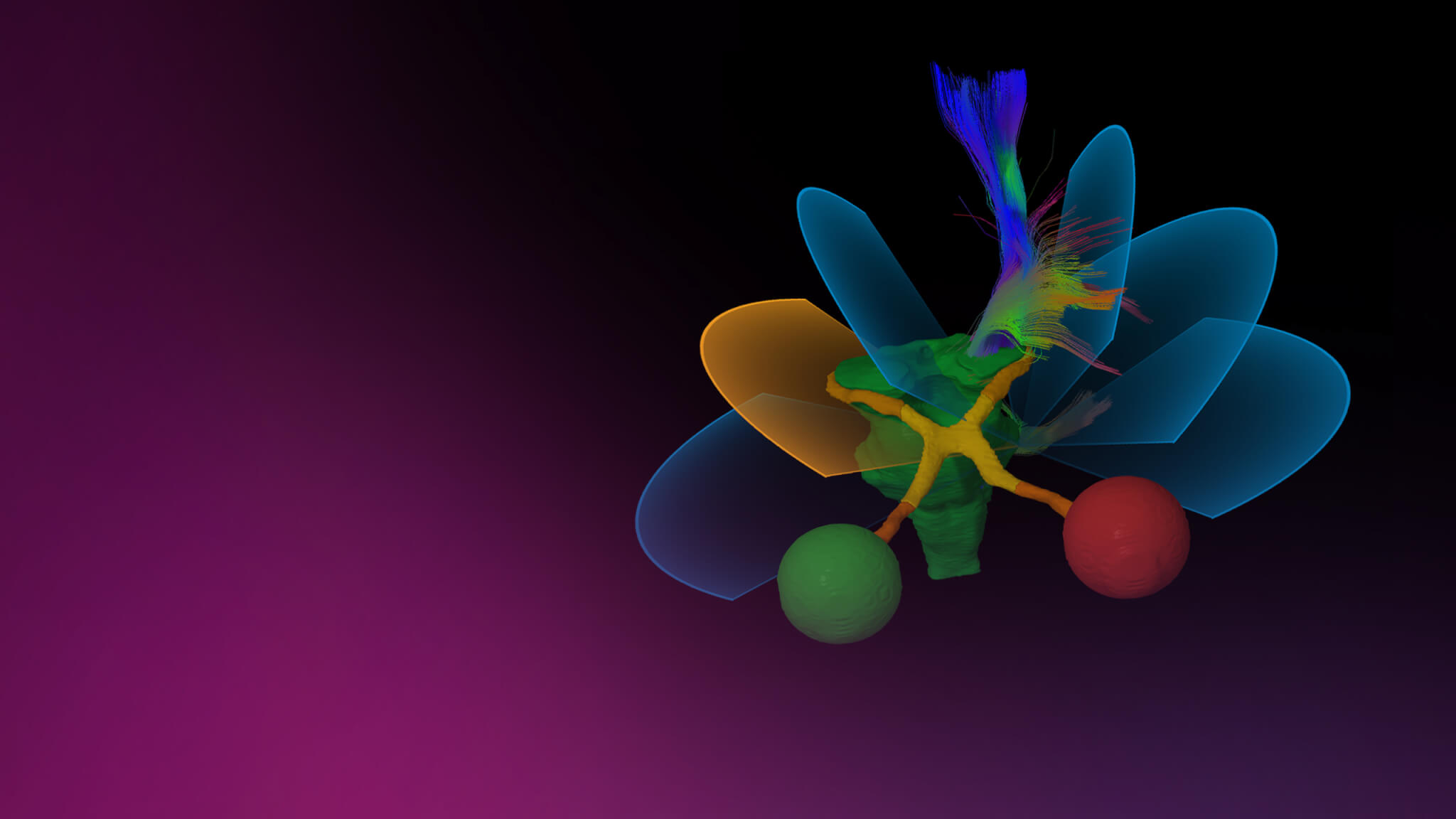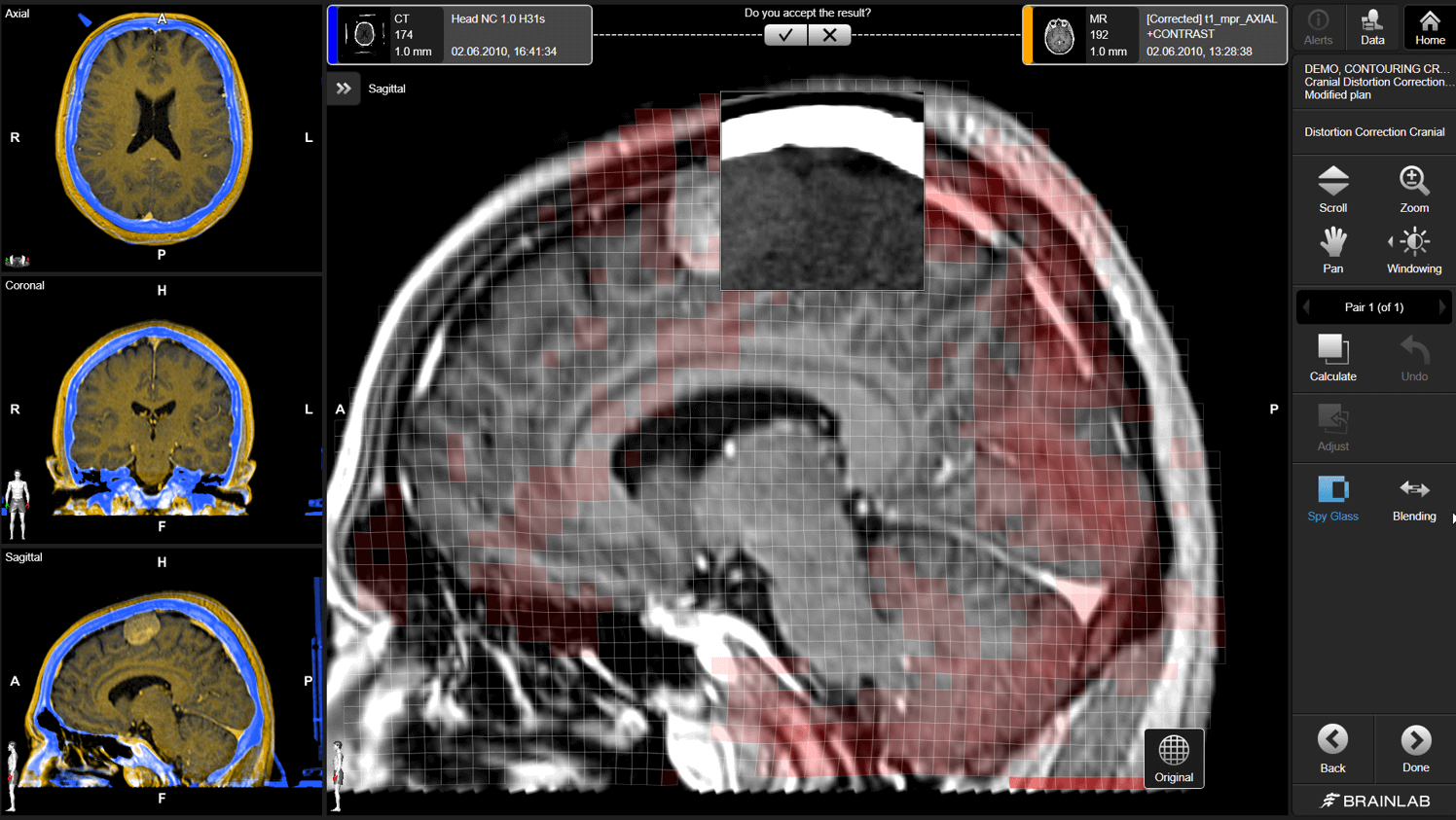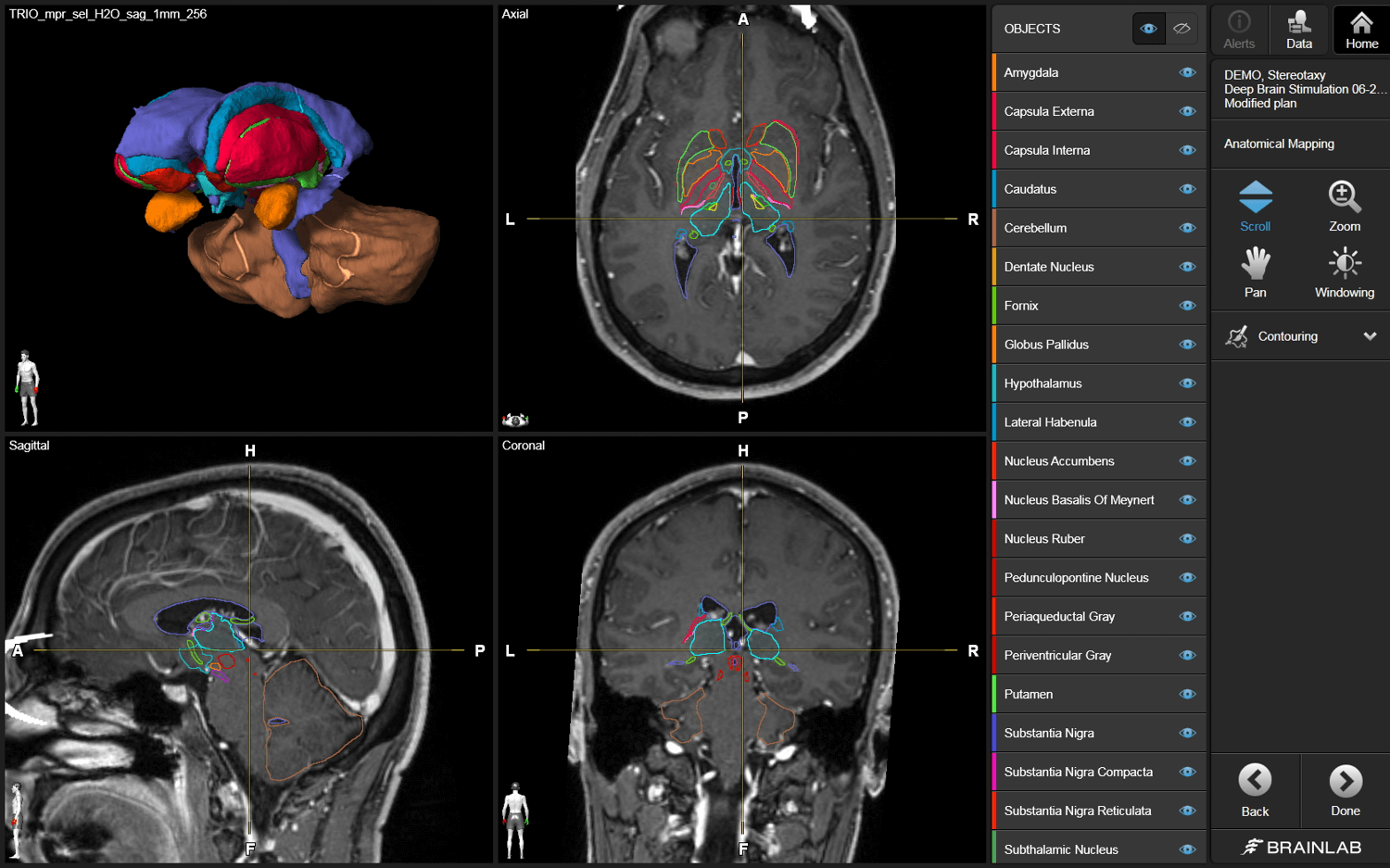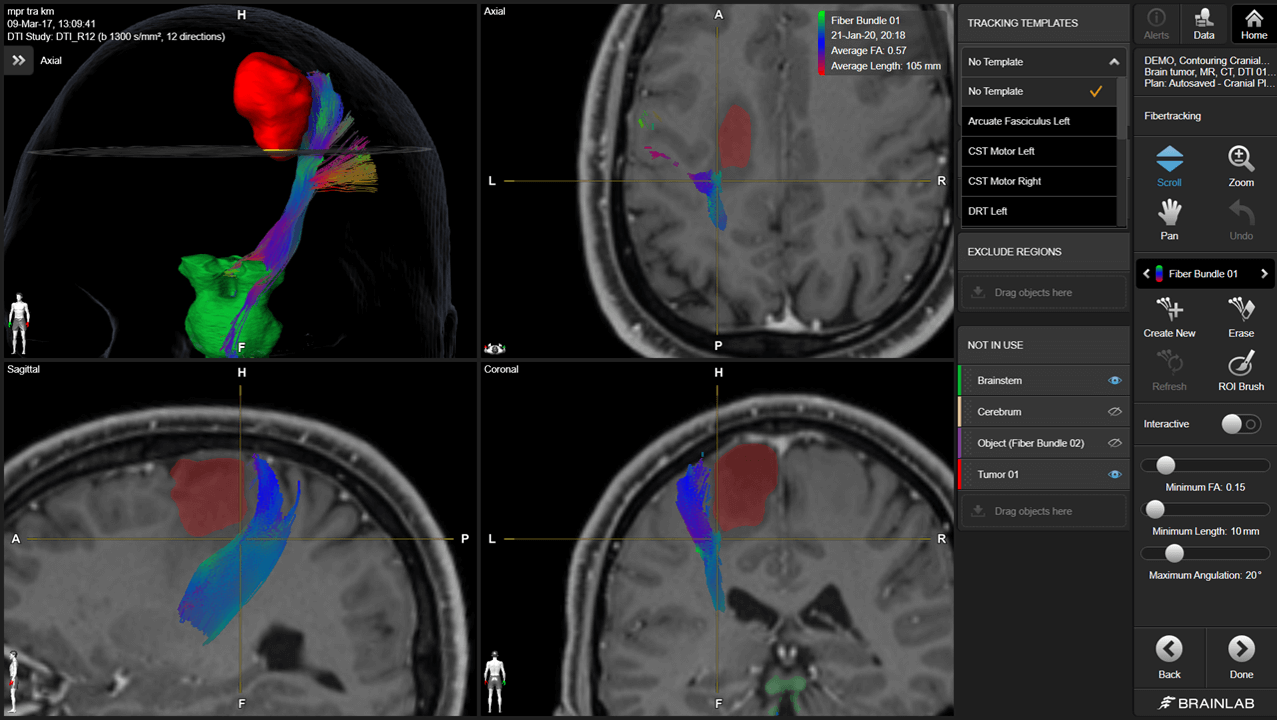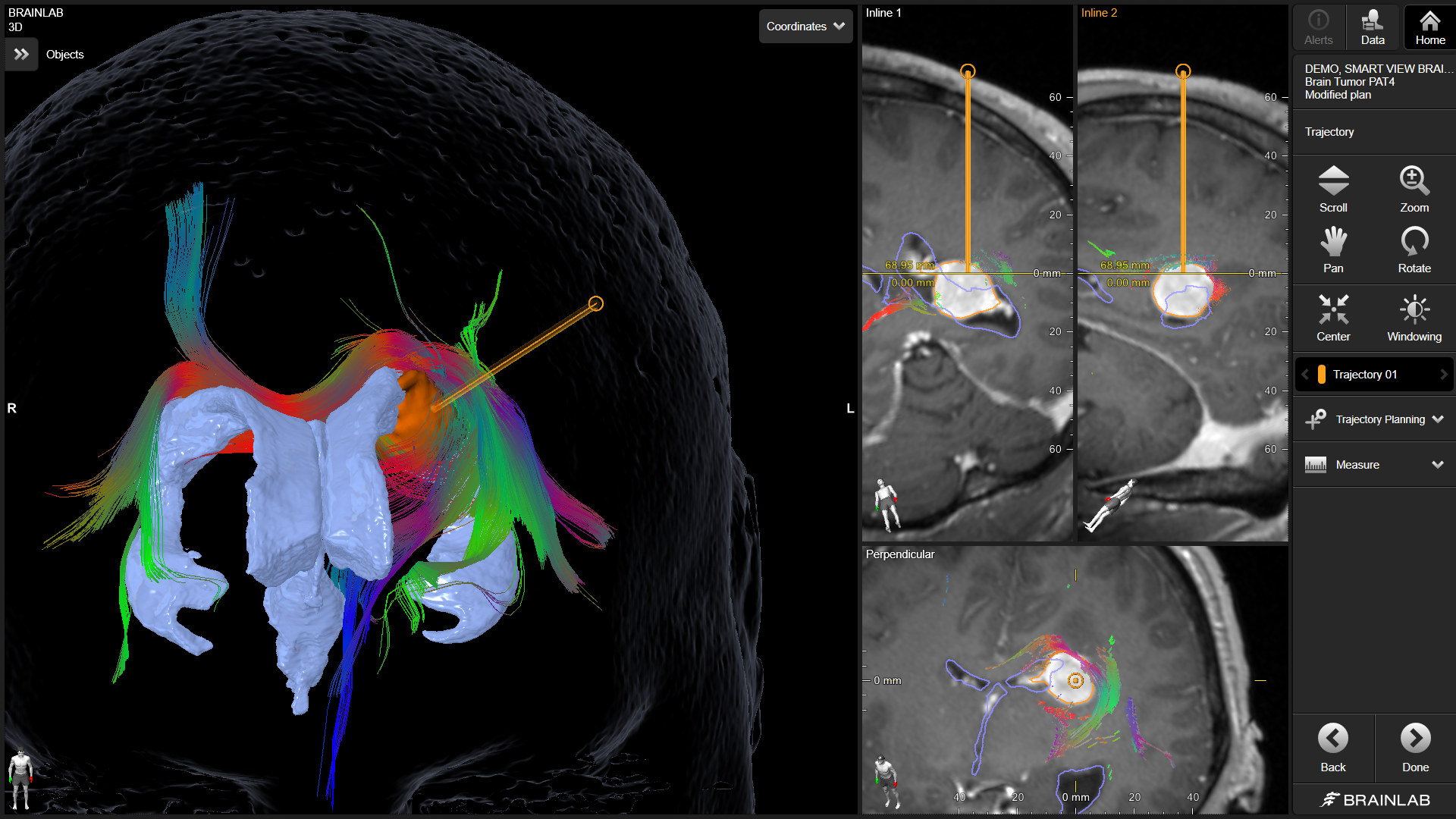Plan your functional indications with dedicated and effective workflows
Elements Cranial functional workflow is dedicated to treatment planning for indications that require the highest precision, like trigeminal neuralgia and essential tremor. This workflow, which involves several intelligent software applications, utilizes conical collimators to generate plans with steep dose gradients that preserve neurological function.
Preparing for functional planning
We’ve built automation into every step of the pre-planning workflow: distortion correction, object segmentation including the basal ganglia, fibertracking, image fusion and trajectory planning.
Creating the Elements Cranial SRS w/ Cones dose plan
With pre-planning complete, planning can continue with Elements Cranial SRS w/ Cones.
